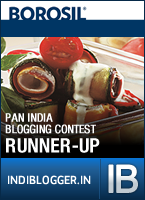Whether you are old hand at baking or new to the craft, these tips ans suggestions will make all the difference in your success.
1. Before You Begin
 |
| Stock Image |
Assemble all the ingredients and tools needed before starting. Read the recipe through to get a sense of the processes and techniques, check the oven's temperature for accuracy.
2.Baking Sheets
Have a baking sheet at room temperature before placing dough on it; a warmer pan will melt the dough, causing cookies to run into one another. Run tepid water over the bottom of the baking sheet to cool it between batches of cookies.
3. Butter
Buy the best ingredients you can afford. The most important ingredient in most cookie recipes is butter. Use fresh, unsalted butter. Before you use it, bring butter to room temperature unless the recipe directs otherwise.
4. Other Ingredients
Eggs: Use fresh large eggs at room temperature. Cold eggs separated best, but after you separate them, bring them to room temperature so they will blend better with other ingredients.
Flour
We use unbleached all - purpose flour in most of our cookie recipes; unless the recipe specifies, do not substitute another kind.
Baking Soda & Baking Powder
Baking soda and powder are not interchangeable However, you can substitute baking soda plus a little acid (usually cream of tartar) for baking powder.
Salt
Table salt is the default choice for baking; use kosher or other coarse salt only when specified.
Sugar
Most of our recipes call for granulated white sugar; use other kinds of sugar only when specified. Brown sugar is usually firmly packed into measuring cups for accurate measures. Sift confectioner's sugar before measuring, to remove lumps.
5. Measuring Cups
For greatest accuracy, use measuring cups, preferably metal, for dry and semisolid (peanut butter, jam, shortening and such) ingredients. Scoop the ingredients into cup and then level it with a straight - edge. Use the right size cup, never estimate portions.
6. Liquid Measuring Cups
A liquid measure is essential for accuracy; place the cup on a work surface as you pour, and blend down to read so the marks are at eye level.
7. No Stick Cookies
Use either parchment paper or non - stick baking mats to make removing cookies from the baking pan easy.
8. Cooling Rack
Most often made of heavy - duty wire, cooling racks allow air to circulate around cookies after they are removed from the oven.
Source: http://www.marthastewart.com







No comments:
Post a Comment